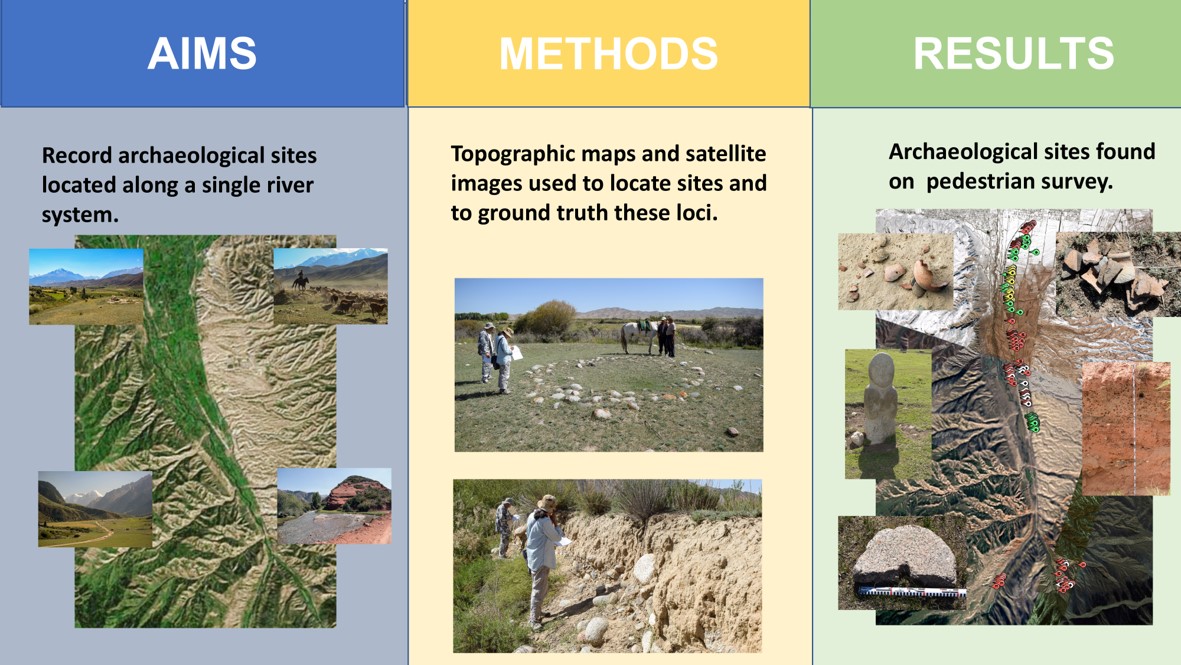This paper discusses the preliminary results of archaeological surveys conducted in the Juuku Region of north-central Kyrgyzstan on the south side of Lake Issyk kul. Our goal was to document ancient and contemporary agropastoral systems over a four millenia period. During the surveys about 350 loci were identified as settlements, burial mounds, graves, single artifact finds, and artifact scatters (ceramic). The areas of Juuku Valley survey included two discrete polygons: Polygon 1, Lower Juuku at 1750 to 1950 m asl in elevation and Polygon 2, Chak Juuku or Upper Eastern Branch Juuku Valley at 2060 to 2100 m asl in elevation. Three radiometric dates and preliminary archaeobotanical studies were conducted at three exposed profile cuts. The methods included here are: (1) pedestrian surveys; (2) use of digital maps (Google Earth, Encarta); (3) placing archaeological loci within known chronological time periods; (4) AMS dating of charcoal samples collected from profile deposits; and (5) preliminary identification of plant remains found from archaeobotanical samples. The results of our research represent the first step toward inventorying and interpreting archaeological data in the Juuku Valley derived from field studies.

